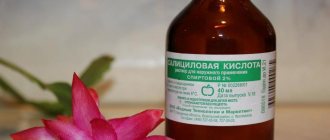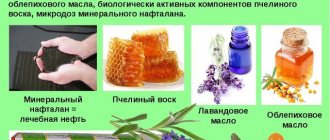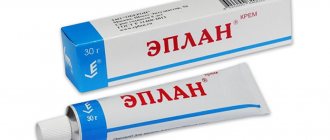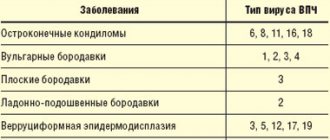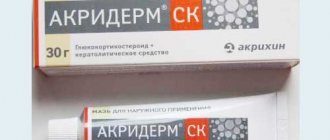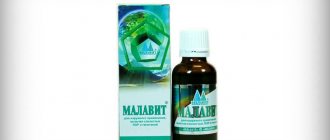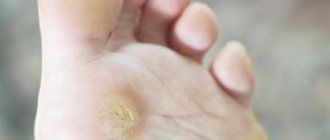- December 29, 2019
- Dermatology
- Daria Zabarnaya
A home medicine cabinet includes a large number of different medications. And, as a rule, an alcohol solution of salicylic acid is always present among them. The popularity of this product among the population is explained by its high efficiency and low price. Salicylic alcohol is especially often purchased by young people to combat skin rashes. The drug is used not only at home, but is also widely used in medical institutions and cosmetology clinics.
Are salicylic alcohol and acid the same thing?
Salicylic (phenolic) acid is a powder with white crystals and is odorless. This is an antiseptic drug that has anti-inflammatory and antimicrobial effects.
In its pure form, the acid is too concentrated and can cause severe burns to the skin. Therefore, for treatment, an alcohol solution containing 1 or 2 percent salicylic acid is used. It is this derivative product that relieves acne and other skin problems. It suppresses the secretion of sweat and sebaceous glands, in high concentrations it has a keratolytic effect, and in low concentrations it has a keratoplastic effect.
Cost of the drug and analogues
If for some reason salicylate acid is not suitable for the patient, you can replace the medications with analogues. Popular analogues of salicylic acid
| A drug | Active ingredient | Manufacturer | Cost (average) |
| Akriderm | Acidum salicylicum, betamethasone | JSC KhFK, Russia | 120 rub. |
| Misol (for fungus) | Acidum salicylicum, petroleum jelly, benzoic acid | Evalar, Russia | 250 rub. |
| Salipod | Acidum salicylicum, sulfur | Veropharm OJSC, Russia | 35 rub. |
| Belosalik | Acidum salicylicum, betamethasone | Belupo, Croatia | 350 rub. |
| Betaderm A | Acidum salicylicum, betamethasone | Elfa Pharmaceutical Plant | 200 rub. |
| Galmanin | Acidum salicylicum, zinc oxide | Tula FF, Russia | 28 rub. |
| Mozolin | Salicylic and benzoic acid | KROK MED, Ukraine | 305 rub. |
| Griseofulvin-Farcos | Acidum salicylicum, griseofulvin | Farkos NPF, Russia | 242 rub. |
| Acerbin | Salicylic, malic, benzoic acid | Montavit, Austria | 395 rub. |
| Hemosol | Acidum salicylicum | PFP "Gemi", Poland | 148 rub. |
| Sulfur-salicylic ointment | Sulfur, Acidum salicylicum | Akrikhin HFC, Russia | 18 rub. |
| Pasta Teymurova | Acidum salicylicum, boric acid | Tula Pharmabika, Russia | 48 rub. |
There are also many cosmetics created on the basis of Acidium salicylicum. These are balms and lotions, creams and tonics, face masks, shampoos for hair loss and dandruff. Such products can be purchased ready-made or made at home yourself using ointment, powder or a solution with salicylate acid.
The price of medicines with salicylate acid depends on the type of medicine. So, an alcohol solution of salicylate will cost about 28 rubles, and an ointment will cost about 23-25 rubles per tube.
Discovery of a healing remedy
The first to develop salicylic acid was the Italian chemist Rafael Piria, who lived in the nineteenth century. He divided the bitter glycoside contained in willow bark (salicin) into two parts and found that the acidic component had healing properties. Piria isolated this substance from the bark and successfully determined its chemical composition and then synthesized it.
1838 is officially considered the year of the discovery of salicylic acid. Its best known derivative today is aspirin, developed by Hoffman in 1897 by acetylation of a chemically pure acid.
At first, the antiseptic product was used to treat rheumatism. And only then it began to be used in dermatology for the treatment of external skin rashes caused by microbes and bacteria.
Composition and release form
According to the instructions for use, salicylic alcohol is a synthetic product that consists of two components: ethanol and salicylic acid dissolved in it in varying concentrations. Typically, the solution contains 70 percent ethyl alcohol and 1 or 2 percent acid. The antiseptic dissolves completely in ethanol, and as a result a concentrated drug with pronounced medicinal properties is formed. The solution is packaged in dark glass bottles with a capacity of 25 and 40 milliliters.
Description of the medicine
In nature, the compound salicylic acid (Acidum salicylicum) can be found in a number of plants, and the substance is chemically produced in powder form. The powder (salicylate) is soluble in water, oil solutions, and alcohol. On pharmacy counters it can be found in bags with different packaging - 10, 25, 50 grams. The most popular forms of release of Acidum salicylicum:
- alcohol solution - sold in bottles with different capacities (10, 40, 25, 100 milliliters);
- salicylic ointment, packaged in small jars or tubes with a capacity of 25 g.
The ointment contains the active ingredient - salicylate in varying percentages (2, 4, 3, 5 and 10 percent) and petroleum jelly. The alcohol solution also has different concentrations of the active substance (1, 3, 2, 10 and 5 percent) and contains 70% ethyl.
Preparations containing salicylate are classified as antiseptics and anti-inflammatory agents; they are intended exclusively for external use.
Acidum salicylicum is part of many combined medicinal preparations used externally - gels, pastes, lotions, creams, ointments (Diprosalik, Viprosal, Teymurov's paste, Camphocin, etc.). You can also buy tablets in pharmacies that contain salicylate derivatives. This includes non-steroidal anti-inflammatory drugs used orally - Aspirin, Antipyrin, Phenacytin, Analgin, etc.
Storage conditions and price
Although the shelf life of salicylic alcohol, according to the instructions for use, is three years, after opening the product is only good for one month, as it tends to erode. If an unpleasant odor or sediment occurs, it is better to stop using the solution. The drug should be stored in a cool place, protected from sunlight and out of reach of children.
The price of salicylic alcohol depends on the percentage of acid and the volume of the bottle. But this is a very cheap product, the cost of which usually does not exceed 25 rubles even in the most expensive pharmacies. On average, a 40-ml bottle of a 1% solution costs 12-14 rubles, and a 2% solution costs 13-16 rubles.
Rules for using antiseptic
How to use salicylic alcohol varies depending on the problem at hand. There are general recommendations that must be followed:
- The product is used for local treatment of affected skin areas.
- The daily dose for adults should not exceed 10 milliliters, for children over one year old - 1 milliliter.
- If the affected area is small, the composition should be applied once a day.
- For sensitive skin, it is better to use an alcohol antiseptic every other day.
- If possible, apply the product locally, avoiding simultaneous treatment of several areas (spot application using a cotton swab).
- Before using the solution, the skin must be cleansed of dirt and cosmetics.
- You can continue treatment with salicylic alcohol for two weeks, then it is recommended to take a break.
- A concentrated solution can injure the skin and cause burns, so it is better to consult a doctor who will individually select the dosage and indicate the frequency and duration of use of the drug.
special instructions
What is salicylic acid?
The Pharmacopoeia describes salicylic acid as an odorless, slightly soluble substance in cold water, which can take the form of colorless and odorless needle crystals or white crystalline powder.
The structural formula of salicylic acid is
The empirical formula is C7H603. The systematic name of the compound is 2-hydroxybenzoic acid.
Receipt
The substance was first isolated in 1838 from willow bark. Hence its traditional name - salicylic acid: in Latin the word “willow” sounds like “salix”. The discovery belongs to the Italian chemist R. Piria.
glycoside salicin contained in willow bark into 2 parts, reveal that its acidic component (salicylic acid) has valuable medicinal properties, determine its chemical composition and successfully synthesize it. This can be considered the first purification of the substance, which served as the impetus for the development of the drug Aspirin .
Samples of acetylsalicylic acid suitable for medical use (chemically pure and in a stable form) were first obtained on August 10, 1897 by the German scientist F. Hoffmann.
Salicylic acid derivatives are methyl salicylate , lysine acetylsalicylate , acetylsalicylic acid , salicylamide , mesalazine , choline and sodium salicylates .
Chemical properties
The chemical properties of the compound are due to the presence of a phenolic hydroxyl, a benzene ring and a carboxyl group in the salicylic acid molecule.
Only the carboxyl group reacts with alkali metal carbonates. As a result, salts are formed - salicylates.
With alkalis, if there is a sufficient amount of them, both the hydroxyl and carboxyl groups react.
When an acid is exposed to alcohols (for example, methyl alcohol) in the presence of mineral acids, esters are formed at the COOH group.
When a substance reacts with anhydrides or acid halides, phenolic hydroxyl reacts. The reaction of salicylic acid (s. acid) with the anhydride or chloanhydride of acetic (ethanoic) acid produces acetylsalicylic acid .
When interacting with phosphoryl chloride, salicylic acid chloride is formed.
If the resulting acid chloride reacts with phenol, salicylic acid phenyl ester is obtained, which is used in medicine as a disinfectant. The main feature of the product is that it does not undergo hydrolysis in the acidic environment of the stomach and disintegrates only in the intestinal tract.
For industrial production of salol c. the acid and phenol are heated in phosphoryl chloride.
The benzene ring of the compound can enter into SE reactions with H2SO4, HNO3, halogens and other electrophilic reagents. The influence of the OH group makes the aromatic ring c. the acid is significantly more active in these reactions in comparison with the benzene ring C₆H₅COOH (benzoic acid).
C. acid easily interacts with an aqueous solution of bromine, while C₆H₅COOH does not decolorize bromine water under similar conditions.
To obtain n-aminosalicylic acid ( PAS ), which is one of the most significant derivatives of c. resorcinol is used as the starting material . First, resorcinol is treated with ammonia (NH3), which makes it possible to obtain meta-aminophenol. The meta-aminophenol is then carboxylated into PAS via the Kolbe-Schmitt reaction.
Physical properties
The powder/crystals are sparingly soluble in cold water, but readily soluble in hot water, diethyl ether, ethanol. Slightly soluble in carbon disulfide. Solubility in water (g/l): 0 °C; 20 °C - 1.8; 60 °C - 8.2; 80 °C - 20.5.
Qualitative reactions for the determination of salicylic acid
S. acid and most of its derivatives give an intense purple color with iron salts Fe+3 (ferric iron). To carry out the reaction, take a small amount of powder. acid and drop a little highly diluted solution of Fe+3 chloride onto it.
Solution s. acid, to which a few drops of copper sulfate (Cu2SO4) were added, when heated, gives a bright emerald green color.
You can also use Cobert's reagent to detect the substance. To prepare it, carefully add 3 drops of formaldehyde to 3 ml of concentrated H2SO4.
A little salicylic acid is placed on a glass slide, after which 2 drops of H2SO4 and, after a few minutes, 1 drop of Cobert’s reagent are added. As a result of this reaction, the powder should turn pink.
Why is salicylic acid needed in cosmetology?
Salicylic acid has long been used very successfully in cosmetology. It has antibacterial properties, treats inflammatory skin lesions well, dries it out, but does not cause irritation.
The effectiveness of using salicylic acid for the face is due to the keratolytic properties of the drug - the product perfectly exfoliates layers of old keratinized skin cells, penetrates deep into the pores and eliminates blockage of the excretory ducts of the sebaceous glands , thereby helping to get rid of blackheads and acne .
In addition, the drug is used:
- for peeling;
- against ingrown hairs;
- from calluses;
- as an exfoliant for heels;
- from warts;
- from corns.
Salicylic acid for acne should be taken at a one percent (maximum two percent) concentration. Using a solution that is too concentrated can cause severe irritation.
It should be remembered that salicylic acid solution for acne is only suitable for people with normal and oily skin. People with dry and flaky skin are not recommended to use this product.
Some try to reduce the severity of these phenomena by applying a nourishing cream to the skin after using the alcohol solution. However, treatment in this case will most likely not be effective enough: the greasy film will create a protective barrier for microbes, and this, in turn, will not eliminate inflammation.
Reviews indicate that using a solution with salicylic acid for acne gives an excellent, but short-term result. Usually, after a couple of months of using the product for the face and body, the skin “gets used” to it. Therefore, it is necessary to take short breaks between courses of treatment.
If there are few acne, the solution is applied pointwise. If the affected area is large, wipe the problem areas with a swab soaked in the product. It is better to take several tampons so as not to spread the infection.
Salicylic acid can be used both as an independent remedy and as part of various talkers. To prepare them, Levomycetin , Streptocide , Camphor alcohol , calendula tincture , Trichopolum , Erythromycin , zinc oxide, sulfur, and boric acid solution are added to salicylic acid .
Popular recipes for homemade anti-acne mash:
- 50 ml of salicylic acid solution, streptocide (7 g), ground into powder, 7 g of sulfur and 50 ml of boric acid solution ;
- a pack of aspirin , a pack of chloramphenicol , calendula tincture (the mixture is infused for 24 hours before use);
- 10 tablets of streptocide , 4 tablets of chloramphenicol , 30 ml of salicylic acid , 80 ml of camphor alcohol ;
- 1 bottle of salicylic alcohol , 2 tablets of chloramphenicol and trichopolum .
All shakers should be shaken well before use.
In order for the effect to be sustainable, in addition to local acne treatment, it is recommended:
- review your diet and make it more balanced;
- get rid of bad habits that adversely affect the condition of the skin;
- undergo a course of hormone therapy;
- take care of your skin regularly;
- to live an active lifestyle.
In cosmetology, salicylic acid can also be used as the main agent in peeling compositions. The procedure allows not only to remove a layer of dead cells, but also to start the processes of elastin and collagen .
The procedure allows you to eliminate signs of aging, acne, comedones, oily shine, get rid of age spots, even out skin tone and make your face smoother and fresher. Peeling can be used on any part of the body.
Peeling mixtures with salicylic acid come in 2 types: paste and solution. The solution is more suitable for facial skin, but the paste is recommended to be applied to the skin of the hands, body and knees.
Peeling can be superficial or superficial-medium. In the first case, a mixture with a 15% concentration of the active substance is used, in the second - with a 30% concentration. Superficial peeling allows you to get rid of oily shine and rashes, clean clogged pores and normalize the functioning of the sebaceous glands; superficial-medium peeling is effective for eliminating acne and post-acne .
To carry out the procedure at home, you need to mix 4 aspirin (uncoated) ground into powder with 1 teaspoon of freshly squeezed lemon juice. The resulting paste is applied to the face with a cotton swab, avoiding the skin around the eyes, and left for 10 minutes.
To remove the mask, soak a cotton pad in water and soda (baking soda neutralizes the acidity of the skin) and wipe the face along the massage lines.
In dermatological practice, various pastes and creams with salicylic acid are widely used, which, in addition to the active component, contain microelements that enhance its effect. For example, Sulfur-salicylic ointment not only allows you to thoroughly cleanse the skin of acne, but also effectively fights Demodex .
For ingrown hairs use a 1-2% solution. To get rid of the problem, it is enough to lubricate the areas of the body where hairs cannot penetrate the epidermis layer and grow under the skin with the solution every day, several times a day.
For calluses and corns, salicylic acid is best used in the form of a 10% ointment. For dry calluses, corns and calluses, it is also advisable to use a callus patch with salicylic acid.
Before attaching a patch to the callus, the feet should be steamed well (with the addition of an antibacterial agent) and wiped dry. Cover the sore spot with a piece of plaster of the required size and leave it for 2 days. If this is necessary, the procedure is repeated 3-4 times until the callus softens and separates completely.
Before applying the ointment, the steps are the same - steam your feet and wipe them dry. Then a patch with a hole cut in the middle is applied to the sore spot. This should be done in such a way that the callus/corns is exposed, and the areas of healthy skin surrounding it remain under the patch.
The callused area is generously treated with ointment and covered with a layer of plaster.
For heels, salicylic acid is used with beeswax and paraffin. Wax and paraffin taken in equal proportions are melted in a water bath, then salicylic acid is added to them and mixed thoroughly. The prepared mixture is applied in several layers to the heels and socks are put on. It is best to leave the compress overnight.
In the morning, the heels are cleaned of the wax-paraffin mixture. After this, it is recommended to take a soda bath and clean the skin with pumice.
To completely get rid of cracked feet, several procedures are usually enough.
Treatment of warts involves the use of salicylic acid with a concentration of 10 to 60%. Salicylic acid for warts is used in the form of ointments, solutions and special patches. One of these products is the Salipod patch , which contains salicylic acid in a 30% concentration.
Before applying the solution, you should steam the area of skin where the tumor has appeared. This will soften the skin and enhance the effect of using the drug. The procedure is carried out before bedtime, applying the medicine directly to the affected area and avoiding areas of healthy skin. After treatment, the wart is covered with a bandage or plaster. In the morning, wash off the product.
With long-term use, the papilloma will soften under the action of acid and can be easily removed with pumice.
Ointment for removing warts is used on the same principle as the solution: before going to bed, the affected area of the skin is steamed, after which a thin layer of the drug is applied to the wart and covered with a bandage. In the morning, the wart is treated with pumice.
Treatment should be continued until the growths completely disappear.
The most convenient method of treating warts is to use a patch. It is enough to simply stick it on previously steamed and towel-dried skin. After 2 days, the patch is removed, and the softened wart is carefully removed with a pumice stone. The procedures are repeated until the wart .
Precautionary measures
The solution and ointment should not be applied to birthmarks, mucous membranes, hairy warts , or warts located on the face or genital area.
If the drug gets on the mucous membranes, the corresponding area must be rinsed with plenty of water.
Absorption of the substance may be increased in case of skin diseases that occur with superficial weeping lesions, hyperemia and/or inflammation (including psoriatic erythroderma ).
Treatment of acne and blackheads
To eliminate rashes on the face, as a rule, a 1% solution of salicylic acid is used. An antiseptic will get rid of acne if it is caused by inflammation of the sebaceous glands. Extensive rashes can be treated with a cotton pad on which the drug is applied. If there are few problem areas, you should apply the solution pointwise using a cotton swab. After treatment, you must wait fifteen minutes and then neutralize the acid by washing with plain water. If over time the result is not achieved, with the permission of the dermatologist, you can proceed to the use of 2 percent salicylic alcohol.
The product helps:
- reduce sebum secretion;
- tighten and cleanse pores;
- disinfect the skin;
- dry;
- exfoliate old cells.
To get rid of acne on the face, salicylic alcohol can be used as a mask. To do this, you will need to additionally purchase cosmetic white or blue clay, which is a cleanser that tones the skin and heals wounds.
To prepare the mask you will need a 1 or 2 percent alcohol solution of salicylic acid, one package of clay and water. Clay and water should be mixed to the consistency of a thick paste and ten drops of antiseptic should be added to the mixture. The mask should be applied to a clean face for fifteen minutes, twice or thrice a week.
For people with oily skin prone to blackheads, salicylic alcohol can be a real salvation: it deeply cleanses pores, stimulates skin renewal and removes sebaceous plugs. To achieve a lasting effect, you need to wipe your face with the solution at least three times a week. After the procedure, be sure to apply a moisturizer or toner to the skin.
Will it help with closed comedones?
The key procedure in the fight against white pimples is exfoliation of dead epidermal cells. Salicylic acid copes well with this task, provided it is used regularly.
Like other BHA acids, it penetrates deep into the skin and removes keratinized particles of the epithelium. With long-term use, the pores are cleaned and the number of closed comedones is reduced.
Important: eliminating white pimples is a long process that requires comprehensive care. In addition to acid, you should use soap or washing gel with acids (for example, CHRISTINA Fresh AHA Cleansing Gel), as well as a light moisturizer that does not clog pores (to prevent dry skin). In difficult situations, pharmaceutical drugs (such as Skinoren) are added.
Elimination of pigment spots
Melanin is the pigment that gives skin its dark tint. When it is distributed unevenly and accumulates in one place, unsightly spots can appear on the body. They look unaesthetic, so it is not surprising that people begin to look for ways to solve the problem. Salicylic alcohol helps get rid of stains. Reviews from women indicate that it is a real salvation from hyperpigmentation and allows you to lighten and even out skin tone.
The simplest method of dealing with age spots is to wipe them daily with an antiseptic solution. You can do this twice a day - in the morning and before bed. Before applying the drug, the skin should be cleaned of makeup and dirt.
The use of salicylic alcohol for age spots is recommended for people with oily or combination skin. Dry skin is best treated with products that do not contain phenolic acid. The course of treatment lasts fifteen days. If it was not effective enough, therapy can be repeated after a five-day break.
Treatment of fungus, ringworm and calluses
In accordance with the instructions for use, salicylic alcohol for the treatment of lichen and fungal infections on the body should be used only as part of complex therapy.
Since the drug has an anti-inflammatory and bactericidal effect, it is often used to eliminate nail fungus. First, you should steam the nail plate using a vinegar, soap-soda or salt bath. This will take about fifteen to twenty minutes. This procedure will help the antiseptic to quickly reach the source of infection and neutralize pathological microorganisms. After the bath, the nail must be cleaned and dried well, and then apply salicylic alcohol to it. You can get rid of the fungus if you repeat the procedure twice a day for at least a month. In some cases, longer therapy is needed (up to six months).
The drug also effectively fights the manifestations of various types of lichen. For treatment, a 2 percent solution is applied two to four times a day to the affected area. To prevent the skin from drying out, after using the product, apply a thin layer of nourishing cream on top of the treated area. When treating lichen, salicylic alcohol shows better results when combined with sulfur ointment and tar.
The antiseptic solution removes dead keratinized skin cells quite well, so it is suitable for treating wet calluses and corns. The formations are impregnated with salicylic alcohol, softening them, and then the skin is cleaned with a stiff brush or pumice stone.
Indications for combating skin problems
Salicylic alcohol is prescribed for the following conditions:
- acne, post-acne;
- black dots;
- infectious rashes;
- oily seborrhea;
- hyperkeratosis;
- chronic eczema;
- warts;
- calluses and corns.
In cosmetology, salicylic acid is known as an anti-acne agent. It copes with the root causes of acne - excess sebum production, clogging of pores with keratinized epithelial cells. The complex action of the alcohol composition allows it to be used to eliminate acne vulgaris, open comedones, red and even white pimples (closed comedones).
Use for chickenpox
The drug is also used to treat chicken rash. It is especially necessary to use a solution of salicylic acid in severe cases of the disease, when there are many rashes, they burst and fester. If such areas are not treated, they will take a bullous form and merge into large and deep ulcers, which will leave behind scars.
Staphylococci and streptococci, which cause chickenpox, are eliminated from the body over a long period of time and only with complex therapy, a mandatory element of which is the use of alcohol-containing drugs. A solution of salicylic acid is applied to the lesions three times a day until the disease is completely eliminated. The product dries the skin, relieves inflammation, disinfects, inhibits pathogenic bacteria, prevents suppuration and accelerates the healing process.
Salicylic alcohol for ingrown hairs
The drug is also actively used for cosmetic purposes. The most common side effect of hair removal is ingrown hairs. Currently, there are many ways to eliminate them, but salicylic alcohol is considered the most effective. It is able to remove the consequences of hair removal in a short time. The procedure achieves an antiseptic effect and prevents the development of suppuration in the hair follicles.
To remove ingrown hair, in addition to an antiseptic, you will need water and glycerin. You need to combine one tablespoon of a 2 percent solution, 20 grams of glycerin and half a glass of cold water. For the medicine to be effective, it should be applied to the area of ingrown hairs once or twice a day. The duration of therapy is until the problem is completely eliminated.
Products based on phenolic acid
To treat acne, age spots, blackheads and other skin lesions, not only an alcohol solution can be used, but also other products made on the basis of salicylic acid:
- Lotions. The advantage is that they do not contain alcohol, and therefore are less drying to the skin. You need to choose a lotion according to your skin type.
- Ointments. These products are very effective, but require careful use due to the likelihood of severe drying and skin burns.
- Gels. Used for daily cleansing of the face from fat and excess dirt.
- Peeling products. Contains salicylic and glycolic acid, the combination of which allows you to achieve deep cleansing. However, you must follow the instructions to avoid unpleasant consequences.
Action of the drug and indications for use
All types of medications containing salicylate acid have a lot of medicinal properties:
- antimicrobial;
- antipruritic;
- anti-inflammatory;
- drying;
- locally irritating;
- keratolytic;
- softening.
When used externally, salicylic acid affects nerve endings, increases trophism and relieves pain. The substance is capable of inhibiting the secretion of both sebaceous and sweat glands, and acts keratolytically - that is, it is capable of dissolving, softening and helping to reject the hypertrophied layer of the epidermis, nails, and hair. Having such properties, Acidum salicylicum is successfully used both in medicine and in cosmetology.
Acidium salicylicum is used in the treatment of:
- erythrasmas;
- inflammatory and infectious skin pathologies;
- baldness, hair loss;
- foot fungus;
- hyperkeratosis, hyperhidrosis;
- eczema;
- pityriasis versicolor;
- ichthyosis;
- burns;
- psoriasis;
- acne;
- pyoderma;
- versicolor;
- seborrhea.
Salicylate acid is used by cosmetologists to eliminate blackheads and acne, warts and corns, calluses and age spots. In dermatology, indications for prescribing medication: various fungi, dermatitis, lichen.
WE RECOMMEND THE ARTICLE!
Fluconazole is an antifungal drug that is used to treat and prevent thrush. Read more >>
Can I drink salicylic alcohol?
Ingestion of an antiseptic solution is strictly prohibited. In this case, severe damage to the mucous membrane occurs, and the very first sip leads to extensive burns of internal organs. If you accidentally get salicylic alcohol into your mouth, the instructions for use instruct you to do the following:
- Rinse your mouth with soda solution (one tablespoon per glass of warm water);
- drink milk in large quantities;
- for stomach adsorption, take activated carbon (1 tablet per ten kilograms of weight);
- To cleanse the intestines, give a water enema;
- in case of severe poisoning, call an ambulance.
Side effects
If used carelessly, salicylic alcohol can cause increased flaking and dry skin. Redness and new rashes may appear. The use of the drug sometimes leads to skin tightness and burns. There is also a risk of allergic reactions.
If the listed phenomena are mild, there is no need to discontinue the antiseptic. It is recommended to reduce its dosage and monitor what the body’s reaction will be in the future. As a rule, side effects disappear after a few days. In this case, treatment can be continued. If negative effects persist, you must stop using the solution and consult a dermatologist to prescribe an alternative medication.
Salicylic acid may increase skin permeability to other topical medications and therefore enhance their absorption. The drug is capable of potentiating the side effects of oral hypoglycemic agents. Pharmaceutically, the solution is incompatible with resorcinol and zinc oxide.
Efficiency: BEFORE and AFTER photos
First example (1 photo - before use, 2 photos - after 3 days, 3 photos - after a week of using salicylic acid, 4 photos - after 2 weeks):
Second example:
Third example (the first 2 photos were taken during an exacerbation of acne, the third - after 5 days of active use):
Contraindications
Salicylic alcohol, like any medicine, has a number of contraindications for use. It cannot be used:
- in case of hypersensitivity to the components of the composition;
- during pregnancy and lactation;
- with liver and kidney failure;
- if you are allergic to salicylic acid;
- children under one year old;
- if there are open wound surfaces;
Particular attention should be paid to the prohibition of use of the drug by pregnant and lactating women. Since the acid penetrates deeply into the skin and is quickly absorbed by epithelial cells, it can cause irreparable harm to the baby. You should not use not only an alcohol solution, but also any ointments, lotions and gels containing salicylic acid, as it very easily passes through the placenta. A high concentration of the substance can lead to anemia in the child and the development of cardiovascular pathologies. There is also a risk for the woman in labor - the use of the drug can provoke painful contractions or a decrease in labor activity.
Pregnancy and lactation
Doctors and scientists strictly prohibit the use of salicylic acid by an expectant mother. It cannot be used not only inside, but also outside. The acid is quickly absorbed into epithelial cells and penetrates deeply into the skin. All products containing salicylic acid (creams, lotions, ointments, gels, peelings) can cause irreparable harm to the fetus, because when absorbed into the blood, the substance easily passes through the placenta.
While the baby is in the mother's belly, her body is the only source of nutrition. A high concentration of salicylic acid can cause fetal anemia or chronic pathology of the cardiovascular system in a child. The use of the drug will also have a negative impact on the woman in labor - it can provoke a decrease in labor activity or painful contractions. During childbirth, a woman will not be able to push normally, which will lead to a severe rupture of the perineum.
The most serious disease that can result not only from systematic, but also from periodic use of salicylic acid by a pregnant woman is Reye's syndrome. Pathology leads to kidney problems, heart defects, and disruption of brain function in a child. The syndrome can even cause death in children 4-12 years old. Also, the use of salicylic acid during pregnancy or lactation can cause reproductive dysfunction in boys.
What people say
Salicylic alcohol receives mostly positive reviews. It has proven itself well in the treatment of skin pathologies, and this is confirmed by numerous reviews. People note that as a result of using the product, the skin is cleansed, the pores are narrowed and inflammation goes away quite quickly. After the course of treatment, the face looks healthier and matte.
However, users say that salicylic alcohol only saves those with oily and combination skin from acne and acne. People with dry skin after using an alcohol solution are often dissatisfied with the result.
Some users suffered skin burns after wiping their faces with a cotton pad heavily soaked in antiseptic. For others, the product caused a burning sensation. This is a fatal mistake, since the medicine must be applied pointwise. And you should definitely moisturize your skin after the procedure. People who did everything correctly, after regular use, noted an improvement in their complexion and elimination of inflammation.
Cure for dermatological problems
Among dermatologists, Acidum salicylicum and the medicines produced on its basis are popular. The advantages of the medicine are the high effectiveness of the drug, its affordability and the absence of discomfort and pain when using the medicine. The disadvantages of the drug are the presence of contraindications and a rather long treatment - high effectiveness can only be achieved with regular and long-term use. However, most patients consider such shortcomings to be insignificant compared to the effectiveness of the drug. Positive user reviews indicate that the drug shows the best results in removing blackheads and pimples, as well as in getting rid of calluses and warts.
